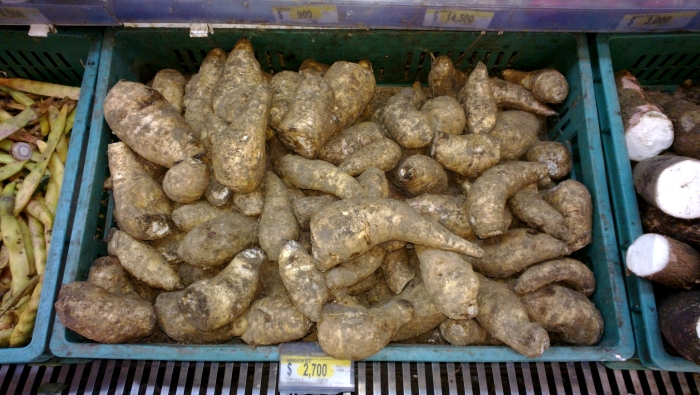Arracacha
(Arracacia xanthorrhiza)
Arracacha (Arracacia xanthorrhiza)
/
/

Germarquezm
CC BY-SA 3.0
Image By:
Germarquezm
Recorded By:
Copyright:
CC BY-SA 3.0
Copyright Notice:
Photo by: Germarquezm | License Type: CC BY-SA 3.0 | License URL: https://creativecommons.org/licenses/by/3.0/us/deed.en | Uploader: Germarquezm | Publisher: Wikimedia Commons |





Estimated Native Range
Summary
Arracacia xanthorrhiza, commonly known as Arracacha, is a deciduous perennial herb native to the Andean highlands of northwestern South America. It typically grows to a height of 3 feet (0.9 meters) and a width of about 0.3 feet (0.09 meters). Arracacha thrives in cool, mountainous regions and is adapted to a range of ecological conditions found in its native Andean habitat, including open areas and cultivated fields at high elevations. The plant features compound leaves that are similar in appearance to parsley, with coloration varying from dark green to purple. Its starchy taproot is the most notable part, resembling fat, short carrots with off-white skin. The flesh inside can be white, yellow, or purple, depending on the variety.
Arracacha is valued for its edible taproot, which is a staple food in many parts of South America and is often used in similar culinary applications as carrots and celery root. The roots are harvested for their sweet, distinctive flavor and are a significant commercial crop in the region. Arracacha is also appreciated for its ornamental foliage, which adds a unique texture to garden beds and borders. In cultivation, arracacha requires full sun exposure and medium water availability. It prefers soils with medium drainage and can tolerate a range of soil types, provided they are well-drained. The plant blooms in the summer, fall, and winter, although the flowers are not particularly showy and are often overshadowed by the foliage and roots. Cultivation outside its native range should be monitored to prevent potential invasiveness.CC BY-SA 4.0
Arracacha is valued for its edible taproot, which is a staple food in many parts of South America and is often used in similar culinary applications as carrots and celery root. The roots are harvested for their sweet, distinctive flavor and are a significant commercial crop in the region. Arracacha is also appreciated for its ornamental foliage, which adds a unique texture to garden beds and borders. In cultivation, arracacha requires full sun exposure and medium water availability. It prefers soils with medium drainage and can tolerate a range of soil types, provided they are well-drained. The plant blooms in the summer, fall, and winter, although the flowers are not particularly showy and are often overshadowed by the foliage and roots. Cultivation outside its native range should be monitored to prevent potential invasiveness.CC BY-SA 4.0
Plant Description
- Plant Type: Herb
- Height: 1.5-3 feet
- Width: 0.3-0.3 feet
- Growth Rate: Moderate
- Flower Color: N/A
- Flowering Season: Spring
- Leaf Retention: Deciduous
Growth Requirements
- Sun: Full Sun
- Water: Medium
- Drainage: Medium
Common Uses
Edible*Disclaimer: Easyscape's listed plant edibility is for informational use. Always verify the safety and proper identification of any plant before consumption., Low Maintenance
Natural Habitat
Native to the Andean highlands of northwestern South America
Other Names
Common Names: Peruvian-Carrot, Peruvian-Parsnip, White-Carrot, Arrakatscha, Pomme De Terre Céleri, Apio, Mandioquinha, Mandioquinha-Salsa, Lacache, Cenoura-Amarela
Scientific Names: , Arracacia xanthorrhiza, Arracacia xanthorhiza var. andina, Arracacia andina, Arracacia esculenta, Arracacha esculenta, Bancroftia decipiens, Bancroftia xanthorrhiza, Conium arracacha, Conium arracacia,
GBIF Accepted Name: Arracacia xanthorrhiza Bancr.